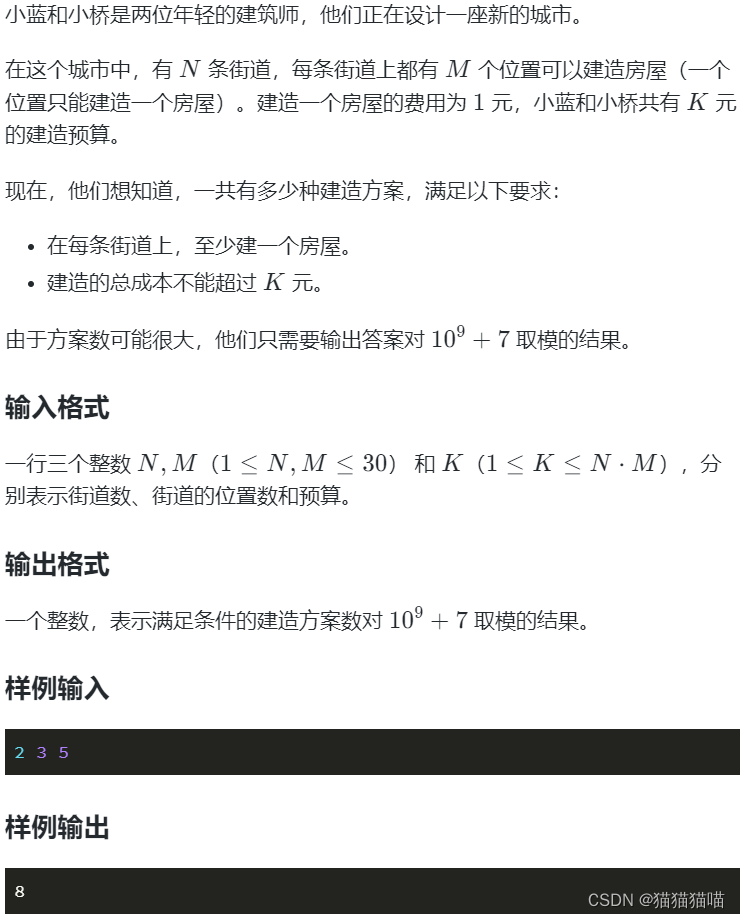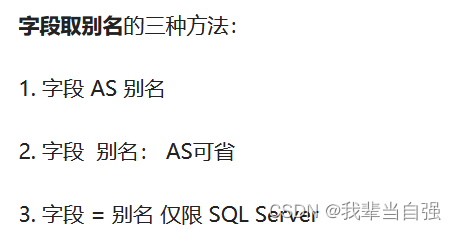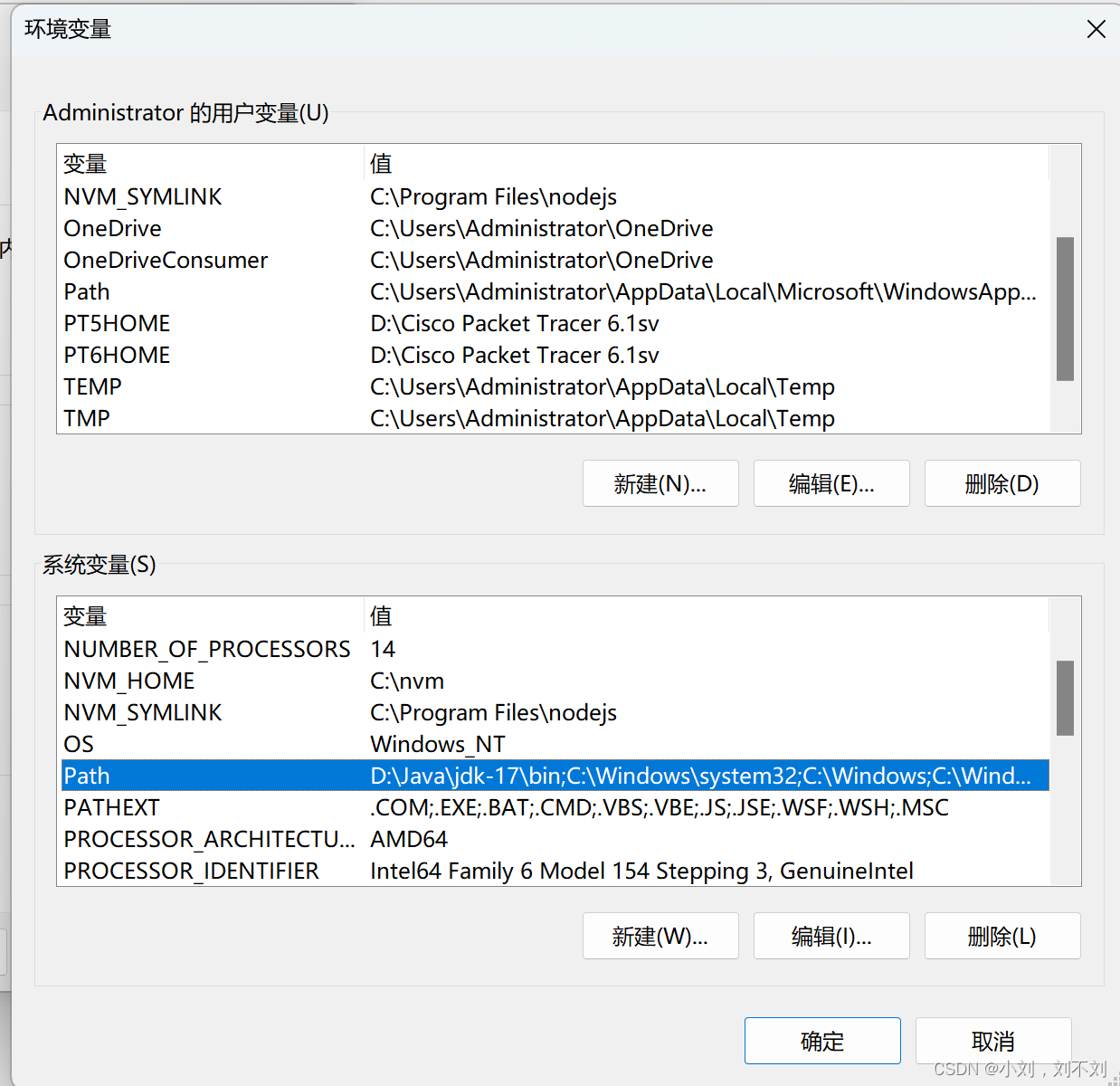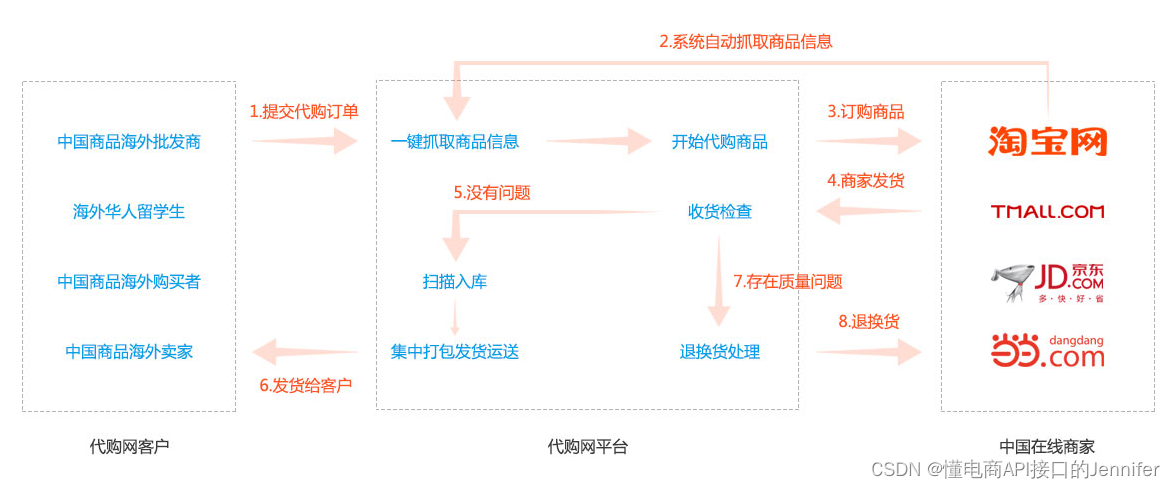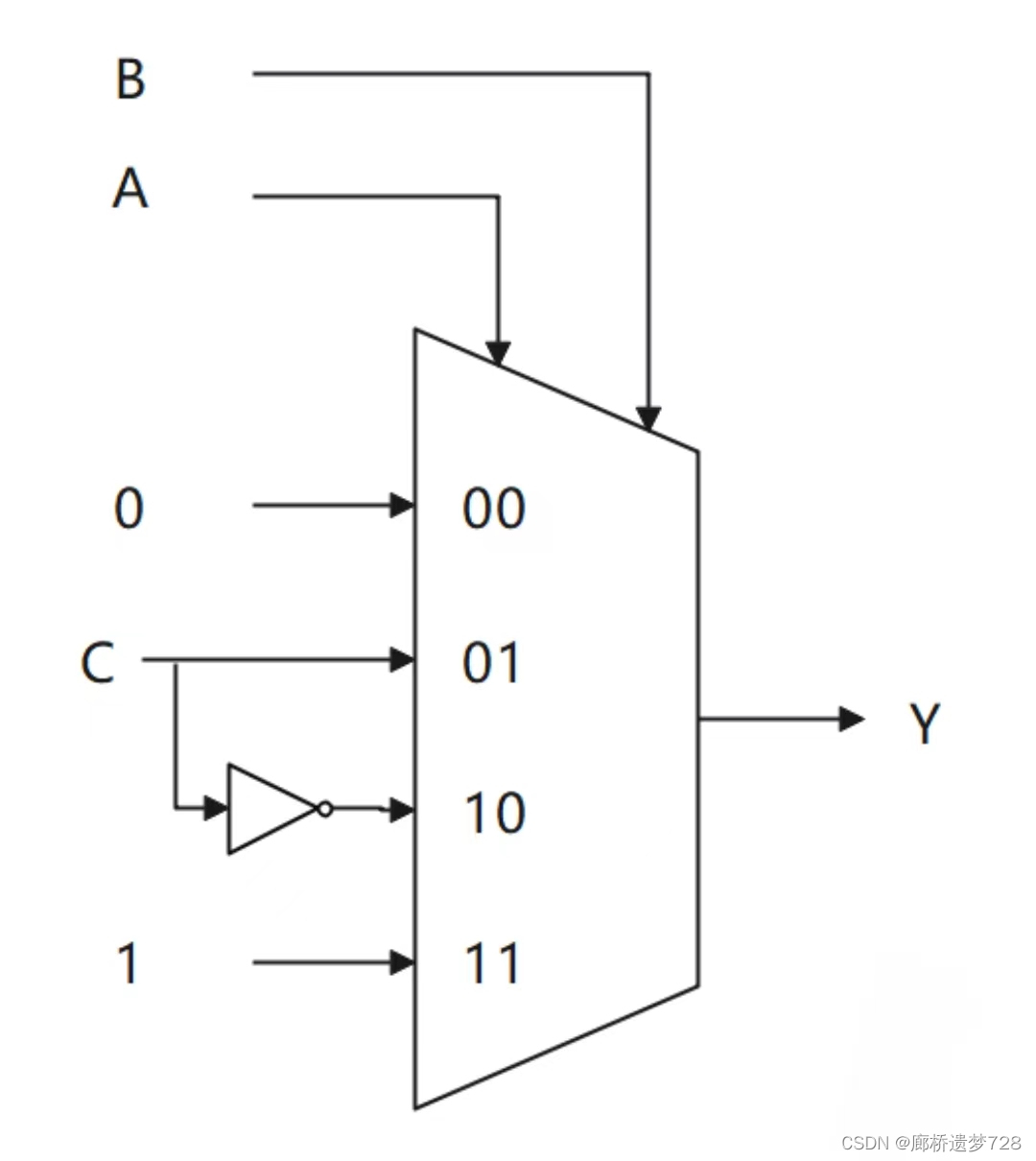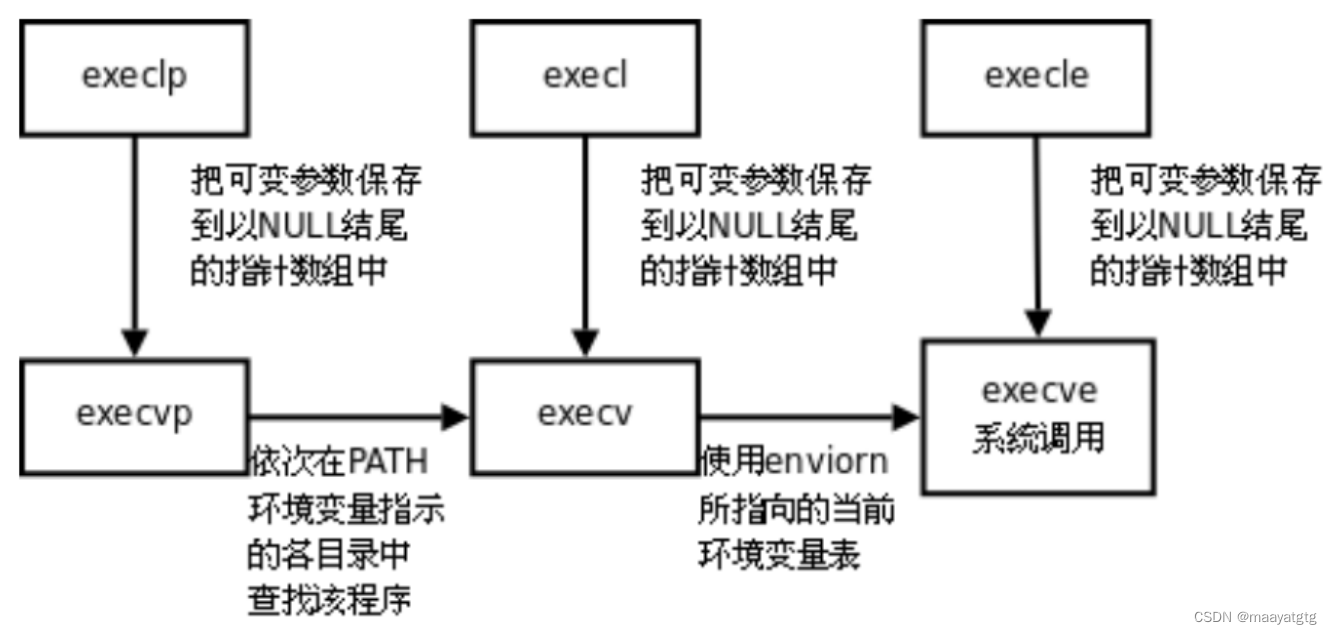多线程的创建
前两种方法无法返回直接结果,而有的线程执行完毕后需要返回结果
方式一:java是通过java.lang.Thread类的对象来代表线程的
- 启动线程必须调用strat方法,不是调用run方法
- 不要把主线程任务放在启动子线程之前
//1.让子类继承Thread线程类
public class MyThread extends Thread{
//2.必须重写Thread类的run方法
@Override
public void run(){
for (int i = 0; i < 5; i++) {
System.out.println("MyThread线程输出:"+i);
}
}
}
public class ThreadTest1 {
//main
public static void main(String[] args) {
//3.创建MyThread线程类的对象代表一个线程
Thread t = new MyThread();
//4.启动线程
t.start();
}
}
方式二:实现Runnable接口
- 优点:任务类只是实现接口,可以继续继承其他类,实现其它接口,扩展性强
//1.实现Runnable接口
public class MyRunnable implements Runnable{
//2.重写run方法
@Override
public void run() {
//3.线程要执行的任务
for (int i = 0; i < 5; i++) {
System.out.println("子线程输出:"+i);
}
}
}public class ThreadTest2 {
public static void main(String[] args) {
//4.创建任务对象
Runnable target = new MyRunnable();
//5.把任务对象交给一个线程处理
new Thread(target).start();
for (int i = 0; i < 5; i++) {
System.out.println("主线程输出:"+i);
}
}
}
线程创建方式二的匿名内部类写法
- 可以创建Runable的匿名内部类对象
- 再交给Thread线程对象
- 在调用线程对象的Strat()启动线程
public class ThreadTest2_2 {
public static void main(String[] args) {
//1.直接创建Runnable接口的匿名内部类形式(任务对象)
Runnable target = new Runnable() {
@Override
public void run() {
for (int i = 0; i < 5; i++) {
System.out.println("子线程1输出:"+i);
}
}
};
new Thread(target).start();
//简化形式
new Thread(new Runnable() {
@Override
public void run() {
for (int i = 0; i < 5; i++) {
System.out.println("子线程2输出:"+i);
}
}
}).start();
//再次简化
new Thread(() -> {
for (int i = 0; i < 5; i++) {
System.out.println("子线程3输出:"+i);
}
}).start();
for (int i = 0; i < 5; i++) {
System.out.println("主线程输出:"+i);
}
}
}
方式三:实现Callable接口
- JDK5.0提供了Cabble接口和FutureTask类来实现
- 可以返回线程执行完毕后的结果
过程
- 定义一个类实现Callable接口,重写Call方法,封装要做的事,和要返回的数据结果
- 把Callable类型的对象封装成FutureTask(线程任务对象)
- 把线程任务对象交给Thread对象
- 调用start方法启动线程
- 线程执行完毕后,通过FutureTask对象的get方法去获取线程任务执行的结果
public class ThreadTest3 {
public static void main(String[] args) throws Exception {
//3.创建一个Callable对象
Callable<String> callable = new MyCallable(100);
//4.把Callable对象封装成一个FutureTask对象
//未来任务对象
//1.是一个任务对象,实现了Runnable接口
//2.可以在线程执行完毕之后,用未来任务对象调用get方法获取线程完毕后的结果
FutureTask<String> futureTask = new FutureTask(callable);
new Thread(futureTask).start();
//6.获取线程执行完毕后的结果
System.out.println(futureTask.get());
}
}
//1.让这个类实现Callable接口
public class MyCallable implements Callable {
private int n;
public MyCallable(int n) {
this.n = n;
}
//2.重写call方法
//求1-n的和
int sum = 0;
@Override
public String call() throws Exception {
for (int i = 1; i <=n; i++) {
sum=sum+i;
}
return "线程求出了1-n的和是:"+sum;
}
}
线程的方法
public class MyThread extends Thread{
public MyThread(String name) {
super(name);
}
@Override
public void run(){
Thread m = Thread.currentThread();
for (int i = 0; i < 3; i++) {
System.out.println(m.getName()+"子线程输出:"+i);
}
}
}
public class ThreadTest1 {
public static void main(String[] args) {
Thread t1 = new MyThread("一号线程");
//设置名字
// t1.setName("一号线程");
t1.start();
System.out.println(t1.getName());
//构造器设置名字
Thread t2 = new MyThread("二号线程");
t2.start();
System.out.println(t2.getName());
//主线程对象的名字
Thread m = Thread.currentThread();//那个线程执型它,他就会得到哪个对象
System.out.println(m.getName());
for (int i = 0; i < 4; i++) {
System.out.println("main线程输出:"+i);
}
}
}
//sleep join 的作用
public class ThreadTest2 {
public static void main(String[] args) throws Exception {
for (int i = 0; i < 5; i++) {
//到3的时候休眠五秒
if(i==3){
Thread.sleep(5000);
}
System.out.println(i);
}
//join方法的作用:让调用这个方法的线程先执行完
Thread t1 = new MyThread("1号线程");
t1.start();
t1.join();
Thread t2 = new MyThread("2号线程");
t2.start();
t2.join();
Thread t3 = new MyThread("3号线程");
t3.start();
Thread t4 = new MyThread("4号线程");
t4.start();
}
}
线程安全问题
加锁:每次只允许一个线程加锁,加锁后才能访问进入,访问完毕后自动解锁,然受其他线程才能在加锁进来
同步代码块
synchronized (同步锁){
访问共享资源的核心代码
}同步锁的注意事项
- 对于当前同时执行的线程来说,同步锁必须是同一把(同一个对象),否则会出bug
- 建议使用共享资源作为锁对象,对于实例方法建议使用this作为锁对象
- 对于静态方法使用字节码(类名.class)对象作为锁对象
public class Account {
private String id;//卡号
private double money;//余额
public Account() {
}
public Account(String id, double money) {
this.id = id;
this.money = money;
}
public String getId() {
return id;
}
public void setId(String id) {
this.id = id;
}
public double getMoney() {
return money;
}
public void setMoney(double money) {
this.money = money;
}
public void drawMoney(int i) {
//先搞清楚是谁来取钱
String name = Thread.currentThread().getName();
//1判断余额是否足够
//this 正好可以代表共享资源
synchronized (this) {
if(this.money>=i){
System.out.println(name+"来取钱"+i+"成功");
this.money-=i;
System.out.println(name+"取钱后,余额是"+this.money);
}else{
System.out.println(name+"来取钱:余额不足");
}
}
}
}
public class DrawThread extends Thread{
private Account acc;
public DrawThread(Account acc, String name){
super(name);
this.acc = acc;
}
@Override
public void run(){
//取钱
acc.drawMoney(100000);
}
}public class ThreadTest {
public static void main(String[] args) {
//创建一个账户对象
Account acc = new Account("123456",100000);
//2.创建两个线程分别代表小明小红,再去同一个账户中取钱
new DrawThread(acc,"小明").start();//小明
new DrawThread(acc,"小红").start();//小红
}
}同步方法
作用:把访问共享核心资源的核心方法给上锁,以此保证线程安全
- 如果是实例方法,同步方法默认使用this作为所得对象
- 如果方法是静态方法,同步方法默认使用类名.class作为所得对象
修饰符 synchronized 返回值类型 方法名称(形参列表){
操作共享资源的代码
} public synchronized void drawMoney(int i) {
//先搞清楚是谁来取钱
String name = Thread.currentThread().getName();
//1判断余额是否足够
if(this.money>=i){
System.out.println(name+"来取钱"+i+"成功");
this.money-=i;
System.out.println(name+"取钱后,余额是"+this.money);
}else{
System.out.println(name+"来取钱:余额不足");
}
}lock锁
package d4_thread_synchronized;
import java.util.concurrent.locks.Lock;
import java.util.concurrent.locks.ReentrantLock;
public class Account {
private String id;//卡号
private double money;//余额
//创建了一个锁对象
private final Lock lk = new ReentrantLock();
public Account() {
}
public Account(String id, double money) {
this.id = id;
this.money = money;
}
public String getId() {
return id;
}
public void setId(String id) {
this.id = id;
}
public double getMoney() {
return money;
}
public void setMoney(double money) {
this.money = money;
}
public void drawMoney(int i) {
//先搞清楚是谁来取钱
String name = Thread.currentThread().getName();
lk.lock();
try {
//1判断余额是否足够
if(this.money>=i){
System.out.println(name+"来取钱"+i+"成功");
this.money-=i;
System.out.println(name+"取钱后,余额是"+this.money);
}else{
System.out.println(name+"来取钱:余额不足");
}
} catch (Exception e) {
throw new RuntimeException(e);
} finally {
lk.unlock();
}
}
}
线程池
计算密集型的任务:核心线程数量 = CPU的核数 + 1
IO密集型的任务: 核心线程数量 = CPU的核数 * 2
创建线程池对象
1. 方式一:使用ExecutorService的实现类ThreadPoolExecutor自创建一个线程池对象
临时线程什么时候创建
- 新任务提交时发现核心线程都在忙,任务队列也满了,并且还可以创建临时线程,此时才会创建临时线程
什么时候开始拒绝新任务
- 核心线程和临时线程都在忙,任务队列也满了,新的任务过来时才会开始拒绝任务
public ThreadPoolExecutor(int corePoolSize, //指定线程池的核心线程数量
int maximumPoolSize, //指定线程池的最大线程数量
long keepAliveTime, //制定临时线程的存活时间
TimeUnit unit, //指定临时线程的存活的时间单位(秒,分,时,天)
BlockingQueue<Runnable> workQueue, //指定线程池的任务队列
ThreadFactory threadFactory, //指定线程池的线程工厂
RejectedExecutionHandler handler //指定线程池的任务拒绝策略(线程都在忙,任务队列也满了的时候,新任务来了该怎么处理)
) {}ExecutorService pool = new ThreadPoolExecutor(3,5,8,TimeUnit.SECONDS,
new ArrayBlockingQueue<>(4),Executors.defaultThreadFactory(),
new ThreadPoolExecutor.AbortPolicy());2. 方式二:使用Executors(线程池的工具类)调用方法返回特点的线程池对象
package d6_threadPoolExecutor;
import d1_create_thread.MyCallable;
import java.util.concurrent.*;
public class ThreadPoolTest3 {
public static void main(String[] args) throws Exception {
//通过Executors创建一个线程池对象
ExecutorService pool = Executors.newFixedThreadPool(3);
//使用线程处理Callable任务
Future<String> f1 = pool.submit(new d1_create_thread.MyCallable(100));
Future f2 = pool.submit(new d1_create_thread.MyCallable(200));
Future f3 = pool.submit(new d1_create_thread.MyCallable(300));
Future f4 = pool.submit(new d1_create_thread.MyCallable(400));
Future f5 = pool.submit(new MyCallable(500));
System.out.println(f1.get());
System.out.println(f2.get());
System.out.println(f3.get());
}
}
线程池处理Runnable任务
package d6_threadPoolExecutor;
import java.util.concurrent.*;
public class ExecutorTest1 {
public static void main(String[] args) {
ExecutorService pool = new ThreadPoolExecutor(3,5,8,TimeUnit.SECONDS,
new ArrayBlockingQueue<>(4),Executors.defaultThreadFactory(),
new ThreadPoolExecutor.AbortPolicy());
MyRunnable target = new MyRunnable();
pool.execute(target); //线程池会自动创建一个新线程,自动处理这个任务,自动执行
pool.execute(target);//线程池会自动创建一个新线程,自动处理这个任务,自动执行
pool.execute(target);//线程池会自动创建一个新线程,自动处理这个任务,自动执行
pool.execute(target);//复用前面的线程
pool.execute(target);//复用前面的线程
pool.shutdown();//等待线程池的任务全部执行完毕后,关闭线程池
pool.shutdownNow();//立即关闭线程池,不管任务是否执行完毕
}
}
package d6_threadPoolExecutor;
public class MyRunnable implements Runnable{
@Override
public void run() {
//描述人物任务
System.out.println(Thread.currentThread().getName()+"输出666--");
try {
Thread.sleep(1000);
} catch (InterruptedException e) {
throw new RuntimeException(e);
}
}
}
线程池处理Callable任务
package d6_threadPoolExecutor;
import java.util.concurrent.Callable;
//1.让这个类实现Callable接口
public class MyCallable implements Callable {
private int n;
public MyCallable(int n) {
this.n = n;
}
//2.重写call方法
//求1-n的和
int sum = 0;
@Override
public String call() throws Exception {
for (int i = 1; i <=n; i++) {
sum=sum+i;
}
return Thread.currentThread().getName()+"线程求出了1-n的和是:"+sum;
}
}
package d6_threadPoolExecutor;
import d1_create_thread.MyCallable;
import java.util.concurrent.*;
public class ThreadPoolTest2 {
public static void main(String[] args) throws Exception {
ExecutorService pool = new ThreadPoolExecutor(3,5,8, TimeUnit.SECONDS,
new ArrayBlockingQueue<>(4), Executors.defaultThreadFactory(),
new ThreadPoolExecutor.AbortPolicy());
//使用线程处理Callable任务
Future<String> f1 = pool.submit(new MyCallable(100));
Future f2 = pool.submit(new MyCallable(200));
Future f3 = pool.submit(new MyCallable(300));
Future f4 = pool.submit(new MyCallable(400));
Future f5 = pool.submit(new MyCallable(500));
System.out.println(f1.get());
System.out.println(f2.get());
System.out.println(f3.get());
}
}
线程的生命周期
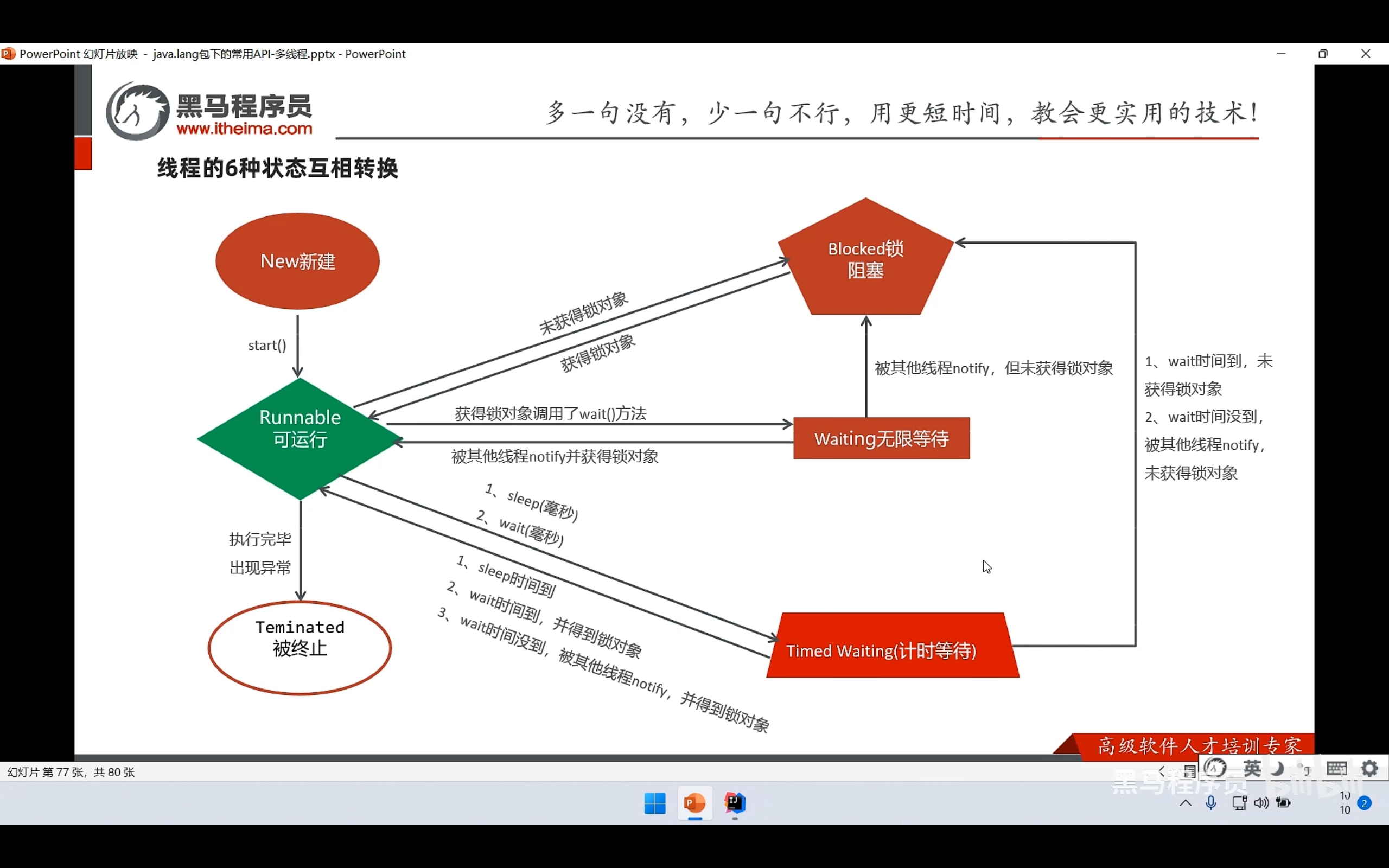
乐观锁
package d7_tx;
import java.util.concurrent.atomic.AtomicInteger;
public class MyRunnable2 implements Runnable{
//整数修改的乐观锁:原子类实现的
private AtomicInteger number = new AtomicInteger();
@Override
public void run() {
for (int i = 0; i < 100; i++) {
System.out.println(number.incrementAndGet());
}
}
}
package d7_tx;
public class Test2 {
public static void main(String[] args) {
//悲观锁,乐观锁原理
//悲观锁:一上来就加锁,没有安全感,每次只能一个线程进入访问完毕后,在解锁 .线程安全,性能较差
//乐观锁:一开始不上锁,认为是没有问题的,大家一起跑,要等出现线程安全问题才开始控制,线程安全,性能较好
//需求:一个静态变量,100个线程,每个线程对其加100次
Runnable target = new MyRunnable2();
for (int i = 1; i <= 100; i++) {
new Thread(target).start();
}
}
}
悲观锁
package d7_tx;
public class MyRunnable implements Runnable{
private int number ;//记录浏览人次
@Override
public void run() {
for (int i = 0; i < 100; i++) {
//悲观锁
synchronized(this) {
System.out.println(++number);
}
}
}
}
package d7_tx;
import d7_tx.MyRunnable;
public class Test {
public static void main(String[] args) {
//悲观锁,乐观锁原理
//悲观锁:一上来就加锁,没有安全感,每次只能一个线程进入访问完毕后,在解锁 .线程安全,性能较差
//乐观锁:一开始不上锁,认为是没有问题的,大家一起跑,要等出现线程安全问题才开始控制,线程安全,性能较好
//需求:一个静态变量,100个线程,每个线程对其加100次
Runnable target = new MyRunnable();
for (int i = 1; i <= 100; i++) {
new Thread(target).start();
}
}
}



